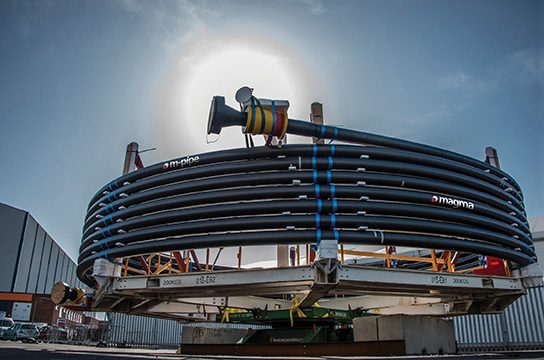
Is Thermoplastic composite pipe worth considering for onshore producers?
The offshore oil and gas industry has been excited about developments in composite pipe for the past decade. Onshore, it’s easy to assume that managing corrosion and metrology are less challenging. Thermoplastic Composite Pipe inspection appears to be simple compared to subsea and corrosion-induced leaks, and they are likely to be easier to manage. Installation is also much more straightforward. Without the challenge of offshore water depths, there is no need for collapse resistance. Is there any advantage in a more expensive composite pipe for onshore producers at all?
The impact of corrosion on onshore production assets
In 2016, the NACE Impact study measured the global cost of corrosion at $2.5 trillion. They estimated the global annual cost of corrosion in the oil and gas production industry to be $1.372 billion, broken down into $589 million in surface pipeline and facility costs, $463 million annually in downhole tubing expenses, and another $320 million in capital expenditures related to corrosion.
Corrosion today is a major threat to the integrity of production assets. According to Roxar Flow Assurance, the most common areas for corrosion monitoring in upstream oil and gas production are production flowlines, water injection systems and import and export lines. The cause of internal corrosion varies from pipe to pipe, but it is usually linked to the presence of water and the use of carbon steel.
Magma’s m-pipe as a corrosion-resistant and flexible solution
Magma’s m-pipe is entirely non-metallic. It is made from carbon fiber and PEEK, lasered into continuous lengths. The way it is manufactured, by layering up a fully bonded structure around a PEEK pipe core, results in a flexible pipe with corrosion and fatigue resistance. Substantially lighter than both steel and non-bonded flexible pipe, it is chemically inert, which means it is resistant to water, sour hydrocarbons and gas, making it ideally suited to onshore production applications.
Successful use cases of m-pipe in onshore production
In the Middle East, the majority of reserves are onshore. One operator there has been looking at how it can play to the advantages of PEEK and carbon fiber composite pipe — high pressure, high temperature, corrosion-proof, yet flexible.
At one of Magma’s customer sites, production skids are sited within around eight meters of each well. Each well and skid has a different geometry, so every wellhead pipe connector is bespoke to the well. Existing rigid steel pipe connectors are expensive and take many weeks to make. Each one must be refabricated every time there is a well workover. Well pressures are relatively low, but sour hydrocarbons are produced at each site. This means steel pipe connectors had to be internally coated to protect against the sour hydrocarbons and regularly inspected for corrosion.
Steel pipe connectors have to be manufactured to within millimeters to ensure a good fit. Manufacture can often take up to six weeks to install from when the well production skid is moved, even slightly, for intervention. This yields six weeks of downtime waiting for a non-productive well-head to get online. Flexible pipe was an obvious solution to slight variations in wellhead connection lengths, but most flexible pipe simply cannot handle hot, sour hydrocarbon service.
The operator commissioned m-pipe flexible wellhead jumpers to replace the rigid steel pipes so it could speed up installation and allow movement between the well and production skid every time there was an intervention. The pipes have been in place for four years now, and the new solution works perfectly. Reconnection now takes a couple of hours instead of six weeks. It’s a huge success.
Magma’s m-pipe has been used for flowlines and jumpers, intervention systems and flying leads by major operators around the world. One standard m-pipe product has delivered hydrocarbon, water and gas service and can accommodate extremely high temperatures of up to 200°F and pressures of up to 20 ksi. It comes spooled in continuous lengths of up to 20,000 feet with internal diameters of 2” to 12,” right up to 24″ internal diameter in shorter lengths of up to 65 feet.
Where is composite pipe attractive onshore? I believe it is worth considering anywhere the use of steel means careful metrology, numerous welds or heavy lifting equipment. In particular, it is worth investigating in any situation that suffers high costs in corrosion control and replacement.
About the Author: Matthew Massey, Vice President Commercial at Magma Global Ltd. Houston-based Massey is responsible for the global commercial success of Magma Global. Massey helps operators solve current challenges with the world’s most advanced Thermoplastic Composite pipe, opening up new possibilities with simpler and more efficient alternatives to steel and non-bonded flexibles. Some of the projects he has consulted on have been challenges that traditional flexible and steel pipe can’t resolve, from corrosion reducing the Thermoplastic Composite pipe life from 20 years to 2 years to high-temperature sour service flexibles needed to mitigate the requirement for bespoke steel architecture being needed for flexibility in field layout. Previously, Massey was at Lloyds Register and Intermoor.














